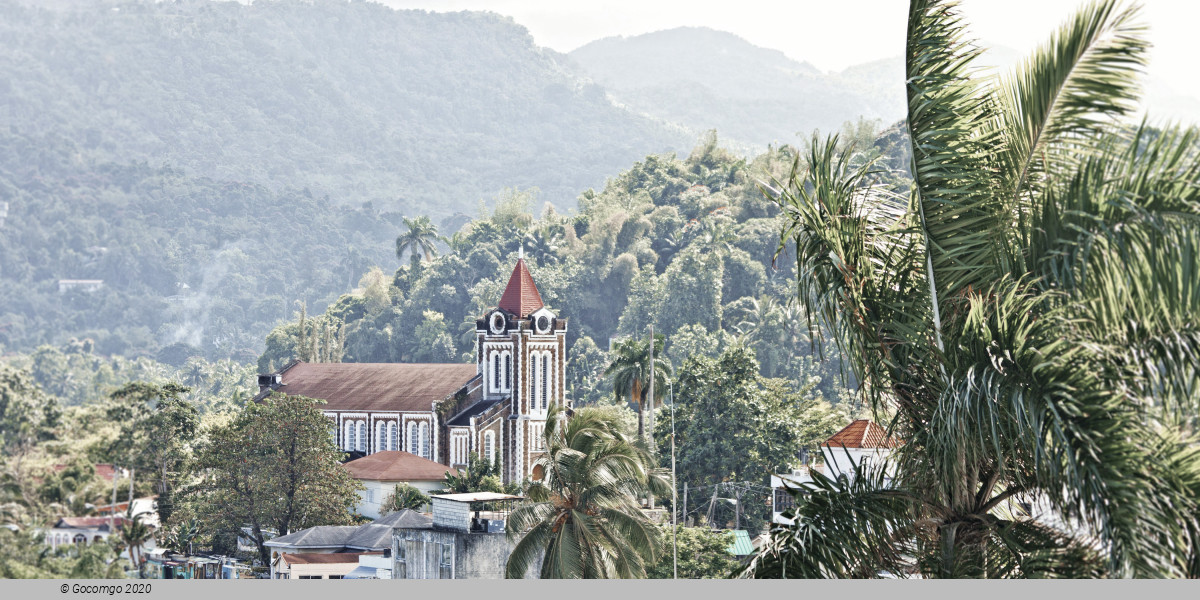Port Antonio

Port Antonio is the capital of the parish of Portland on the northeastern coast of Jamaica, about 100 km (60 miles) from Kingston. It had a population of 12,285 in 1982 and 13,246 in 1991. It is the island's third largest port, famous as a shipping point for bananas and coconuts, as well as one of its most important tourist attractions, tourism being a major contributor to the town’s economy.
Port Antonio was a settlement first established in Spanish Jamaica, when it was known as Puerto Anton. Portland formally became a parish in 1723 by order of the Duke of Portland, the then-Governor of Jamaica after whom it is named. The existing port was to be called Port Antonio and was slated to become a naval stronghold. To that end, by 1729, the colonial government began to build Fort George on the peninsula separating the twin East and West harbors known as the Titchfield promontory. The fort was intended to protect settlers from attacks by the Spanish from the sea, and from the Jamaican Maroons who lived in the mountains. Port Antonio was a sleepy coastal town until the 1880s, when Lorenzo Dow Baker started the banana trade in Jamaica and successfully promoted Port Antonio as a destination for wealthy American travelers. "Portie" became a boom town. The banana trade and the tourists who came in the banana boats, was once so large that at one time, weekly sailing from Port Antonio was greater than weekly sailing from the great English port of Liverpool. The island was glamorized by Hollywood as a model of paradise in movies of the 1940s and 1950s,[citation needed] and in later movies such as Club Paradise and Cocktail. This image was added to by the arrival of movie star Errol Flynn in 1946 when his yacht, the Zaca washed ashore in bad weather. He subsequently bought nearby Navy Island, part of historic Fort George in Port Antonio as well as hundreds of acres of farmland along the Portland coast.

